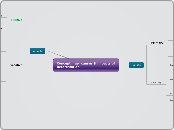realizată de Ethan Huang 1 an în urmă
72
INTERACTIONS IN THE ENVIRONMENT
An ecosystem comprises both biotic and abiotic elements that interact to support a thriving environment. Producers, such as plants, create their own food using abiotic components like soil and water, while consumers rely on other biotic elements for sustenance.









